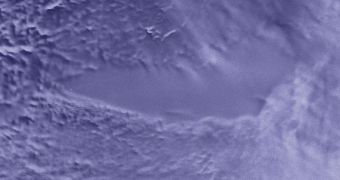Scientists seeking to drill deep beneath Antarctica announce that deeply-buried Lake Vostok is within their reach. Russian drill specialists say that they have only 100 meters of depth to cover, and that the amazing, sealed lake will be reached this year, or in 2011 at the latest. The issue is not simply drilling through the ice caps covering the feature, but also ensuring that the equipment which makes its way into this sterile environment doesn't contaminate it with foreign substances. The lake was most likely sealed off by the ice millions of years ago, and researchers are keen on learning how life evolved in this secluded environment, The St. Petersburg Times announces.
The leader of the Russian Antarctic Expedition, Valery Lukin, says that the team has already created a 3D map of the lake, its floor and its surroundings, which will help them navigate their drilling heads with increased accuracy, without risking contamination. A range of new equipments have been developed, whose primary goal is to ensure that drilling remains sterile. The international scientific community has expressed great concern that bacteria or microbes brought from the surface could adversely impact this self-sufficient ecosystem, tainting study results, and therefore rendering the entire drill effort useless.
Speaking last Wednesday at a meeting of the Russian Geographical Society, which was dedicated to marking the 190th anniversary of the discovery of Antarctica, the expert said that “the new borehole is currently 3,650 meters deep, and the total depth of ice above the lake is 3,750 meters.” He added that the new drilling effort had resumed from a depth of 3,590 meters, after the team had to change the initially-planned route of the drills. This happened because the original track saw the drilling head getting jammed at a depth of about 3,677 meters, in 2008.
“It’s very possible that we could find microorganisms that we’ve never known existed, those that lived in the waters of the lake millions of years ago,” the expert added, saying that this is one of the primary goals of the investigation. The drilling team therefore worked with colleagues at the St. Petersburg’s Nuclear Physics Institute, in order to create the new equipment needed to ensure that accuracy of the collected samples. The group says that the level of oxygen in the lake is about 50 times higher than normal, and adds that conditions here may be very similar to the ones on Europa, Jupiter's satellite.

 14 DAY TRIAL //
14 DAY TRIAL //